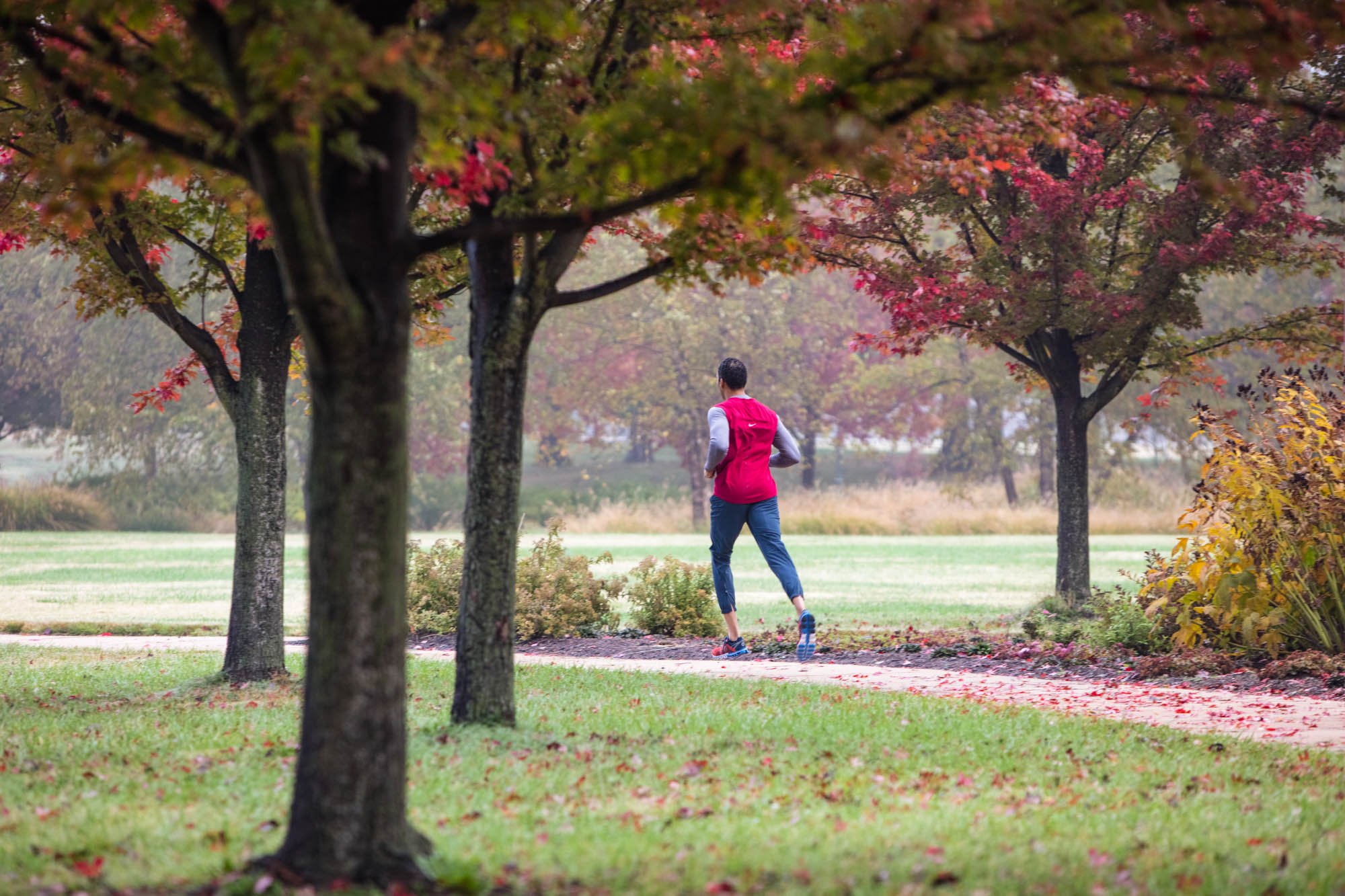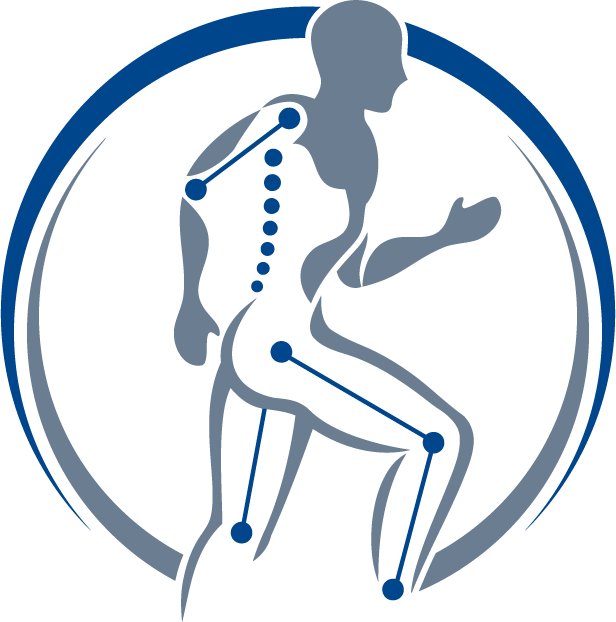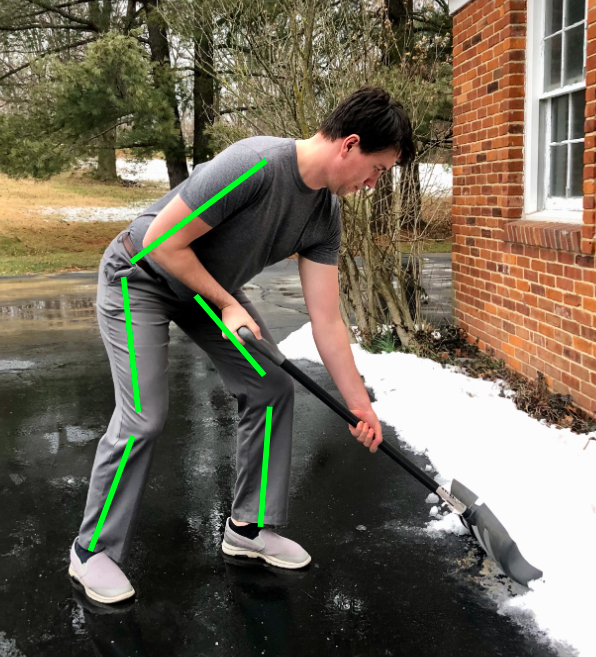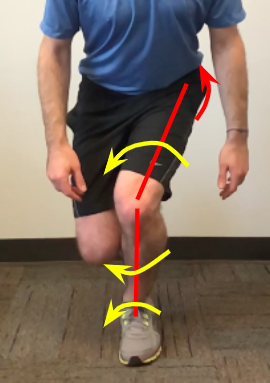
LEARN
Precision Physical Therapy Blog
Running biomechanics: Indication of ITB Stiffness
Iliotibial band (ITB) friction syndrome (a common cause of knee pain) is the second most common injury afflicting runners - second to patellofemoral pain syndrome, another type of knee pain. In runners, the ITB can become tight due to overuse of the tensor fasciae latae (TFL) muscle that attaches into it and insufficient use of other hip flexors. While sometimes it is difficult to self assess and identify if your TFL/ITB complex is tight relative to the rest of the hip flexors, there is one sign present in running that is a clear indicator of TFL tension and overuse. This is tibial lateral rotation during swing phase of running.
Can you fix slouched posture?
We all know what it looks like when we don’t stand up straight, but it’s hard to know what to do to fix slouched posture and whether it’s even important to focus on. Most people don’t realize that spine and joint pain is more often caused by bad posture than vigorous exercise. Fixing your posture can get rid of pain and make you look and feel better.
Are your hamstring stretches effective?
Do you remember the ‘sit and reach’ test from the presidential fitness program in grade school? We would all line up and see who could reach to and past their feet as a measure of flexibility. We thought we were seeing who had the most flexible hamstrings, however this test is not actually specific for hamstring muscle length! You can reach to your toes and still have moderately short hamstrings if all the ‘reach’ in the test is coming from your spine.
Running biomechanics: Where should my foot strike?
While it may be frustrating to hear foot strike advice change as research is published, know that there are still some constants when it comes to biomechanics at the moment your foot hits the ground. Instead of focusing on which part of the foot contacts the ground, you may consider thinking about how far the foot contracts the ground in front of the knee and how large the angle is from the bottom of the foot to the ground. These are two things that decrease your injury risk and are very easy to identify with slow motion video. You can even assess them yourself.
Another Look at Hip Drop
Hands and knees (quadruped) exercises allow us to challenge our ability to control spine/pelvis posture with less impact from gravity. This is a great position to challenge and fine tune our movement quality and strength. Quadruped exercises are both common in strengthening programs and important for developing core stability. But many of us are not sure what makes “good form” when completing a quadruped exercise.
Running: Heel Raises, How & Why
Calf weakness is a common issue in runners and can lead to pain and injuries in the foot and lower leg. Calf weakness presents in multiple ways when assessing a runner’s gait mechanics. One of those ways is when the knee travels excessively forward of the toe at mid stance during gait (also known as increased anterior tibial translation). It is true that there are other movement problems that contribute to increased anterior tibial translation at mid stance, however the key contributor we will discuss today is calf weakness. Below you can see a still shot of normal and excessive tibial translation.
What those with chiseled abs can learn from today’s PB instructor
Our body is built in alternating stable and mobile segments. In general we want to improve stability of the ‘stable segments’ and improve mobility of the ‘mobile segments’. When we break down and allow our mobile segments to get stiff, it forces our stable segments to move too easily. The lumbar spine is sandwiched between two mobile segments, the thoracic spine (our primary source of rotation in our spine/ torso) and the hip joint (that also allows for rotation as a ball and socket joint). The lumbar spine (low back) is designed as a stable segment, not as a rotational (or mobile) segment.
How to help your loved one shovel snow safely
All physical activities require a balance of strength, flexibility, and coordination, together they make up our movement patterns. Snow shoveling is one of those activities that require strength and coordination or it can lead to problems! Indeed what inspired me to write this blog was my husband's significantly improved snow shoveling posture following his last few years of improving his movement quality with strength training.
How Sitting Posture Impacts Movement Health
While most of the time we focus this blog on moving with good quality during fitness, it is also important to be sitting well. Poor sitting posture commonly leads to aches and pains that present themselves on a run, in fitness class, at the gym and in managing our homes. With an increased number of people working from home, navigating new work spaces and poorly fitting furniture, now is a great time to assess your sitting posture and make improvements for joint health. Today we will discuss a few of these sitting patterns that lead to movement pains, review why they matter, and postulate why they are happening.
Running: Dynamic Knee Valgus
Limited ankle range of motion and gluteal weakness: two of the most common contributors to injuries that we see in runners. These impairments often lead to a movement pattern called dynamic knee valgus and knee pain in runners. This is especially true in those who are new to running or returning after a long break. This blog will describe the knee valgus pattern: What is it? How do you fix it? Why does it matter?
Pure Barre: Stability While Walking
At Precision PT, one of our favorite things about Pure Barre is the emphasis on quality gluteal strengthening. The gluteal strengthening and abdominal strengthening done in Pure Barre can be consciously used to correct poor walking habits. We frequently work with patients to change their movement patterns with walking as a way to improve back, hip and knee pain. The most common problems we see with walking patterns (at the pelvis) have to do with hip drop and pelvic rotation.
Pure Barre: Knee Valgus Posture
You may have heard your pure barre instructors discuss knee posture during class, particularly during lunging positions. Knee posture is one of those areas that is a focus of fitness classes but commonly overlooked in daily life. The knee joint is a hinge joint - think about how it should open and close. While it can rotate, in general rotation of the knee creates problems. Fortunately, the knee is well studied! There are lots of research publications available on knee posture and its impact on osteoarthritis, meniscus tears, ACL tears and patellofemoral pain.
Pure Barre: How to Correct Forward Head Posture during Function and Fitness
Neck posture can be tricky to change Years of desk work and cell phone use leaves many of us with a forward head posture. When we allow our head to move into a forward position, over time the tissues in the back of the neck become short and stiff and the tissues in the front of the neck become long and weak. This imbalance can be challenging to correct.It requires a careful mix of stretching, strengthening, and coordination training in addition to unlearning the posture habits that caused it in the first place!
Runners: Why the inside of your foot hurts - 3 potential causes
One of the more common running gait patterns associated with foot pain is excessive ankle pronation. We typically see this as the leg is accepting body weight after initial contact moving into mid stance. Ankle pronation is when the arch of the foot flattens toward the ground. Ankle pronation is a normal function of the foot and a good thing for our running. When ankle pronation becomes excessive we start to see injuries such as posterior tibialis tendonitis, achilles tendonitis, plantar fasciitis, tarsal tunnel and medial tibial stress syndrome.
Runners: "Is my running form too bouncy?"
Have you ever wondered if you have a bouncy running gait? How much bounce is too much? Well this is one of the things we look for when analyzing a person’s running gait. Increased vertical motion during running causes increased stress in some of the joints, as well as using your valuable energy moving in a direction that is not forward. We call this increased vertical displacement of the center of mass.
Pure Barre: Control your hip hinge with your gluteals.
There are many exercises across a Pure Barre class that require a hip hinge motion. Consider the arm (triceps and biceps) strengthening early in class, this requires the hips to move back, knees to slightly bend and the trunk to lean forward. This movement is essentially the ‘deadlift’ movement that many weight lifters train at the gym. This movement is also required for leaning over a table, cleaning the counter and brushing your teeth at the sink. Practicing a good quality hip hinge during Pure Barre will benefit you across your day in many different activities.
Pure Barre: Easing your wrists into a plank.
I remember back to when I first started Pure Barre. My wrists were sore and my body needed time to adapt to plank and push up postures. This is normal. Prolonged wrist extension at 90 degrees requires not only normal bony alignment, but strength in the muscles of the forearm, wrist and fingers. Today we discuss ways to ease your wrists into a plank if you are new to Pure Barre or have some differences in your joint structure that vary from normal.
Pure Barre: How to Align Your Shoulders During Planks
This month I want to discuss scapular posture during front planks. Planking is one of the ways we strengthening our shoulders in Pure Barre. Strengthening an ideal shoulder alignment will allow us to hold the good posture during strenuous daily activities like lifting heavy objects and pushing heavy doors. Finding that ideal alignment can help us to prevent injuries in the future.
Running Biomechanics: Gluteal Compensation Patterns
As many of you may guess, the gluteal muscles are incredibly important for strong running. When running, these muscles work together to move the leg behind you, to keep the pelvis level to the horizon when standing on one leg, and to keep the leg from turning too far inward. This is pretty important stuff for a runner! Suffice it to say that the stronger and more balanced the glueteals, the more stable and efficient your running form will be.




















